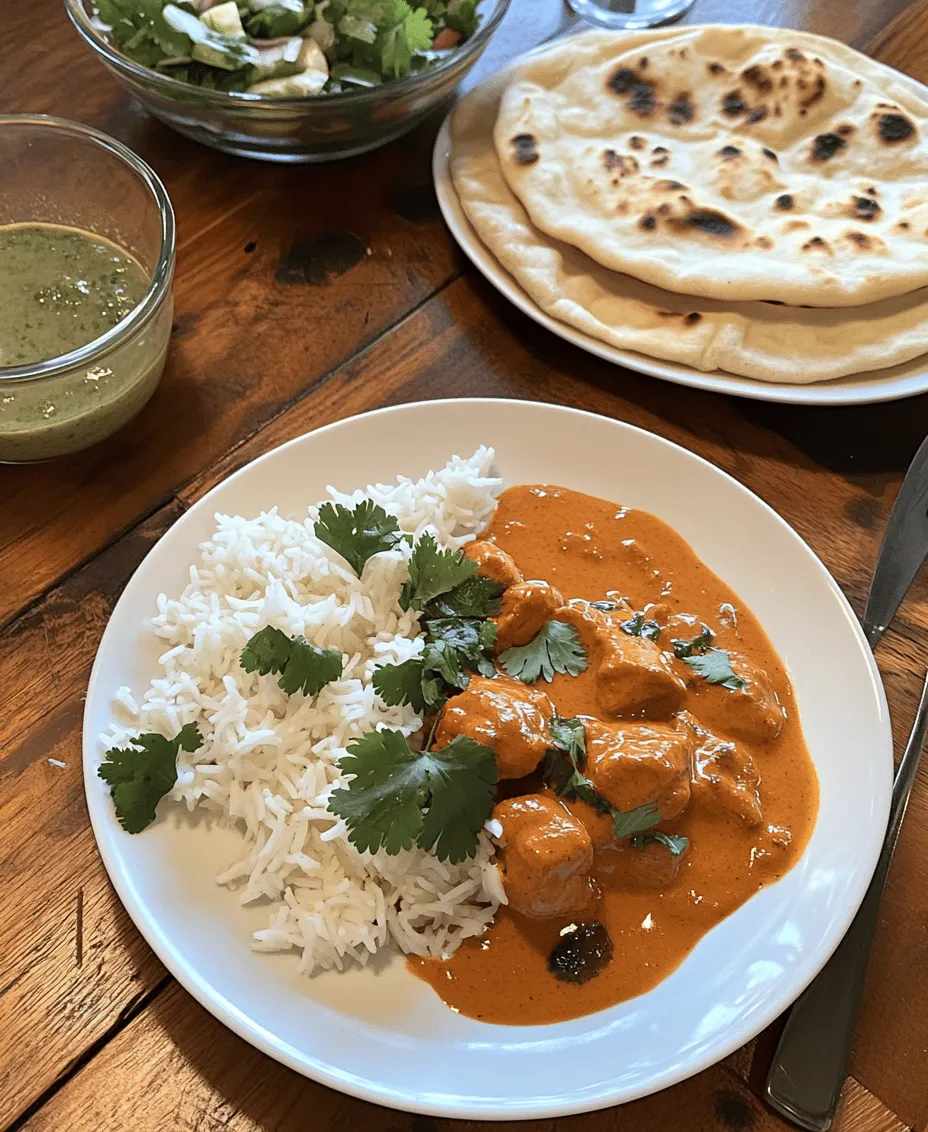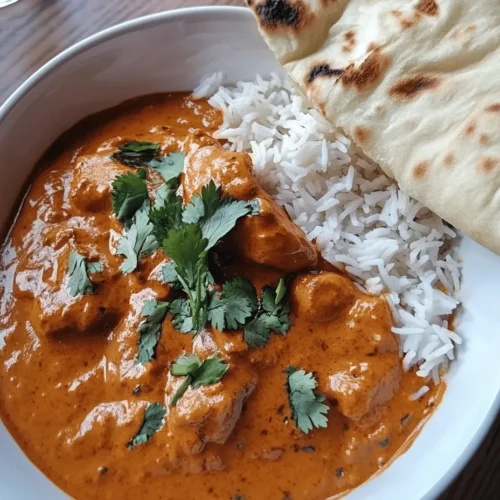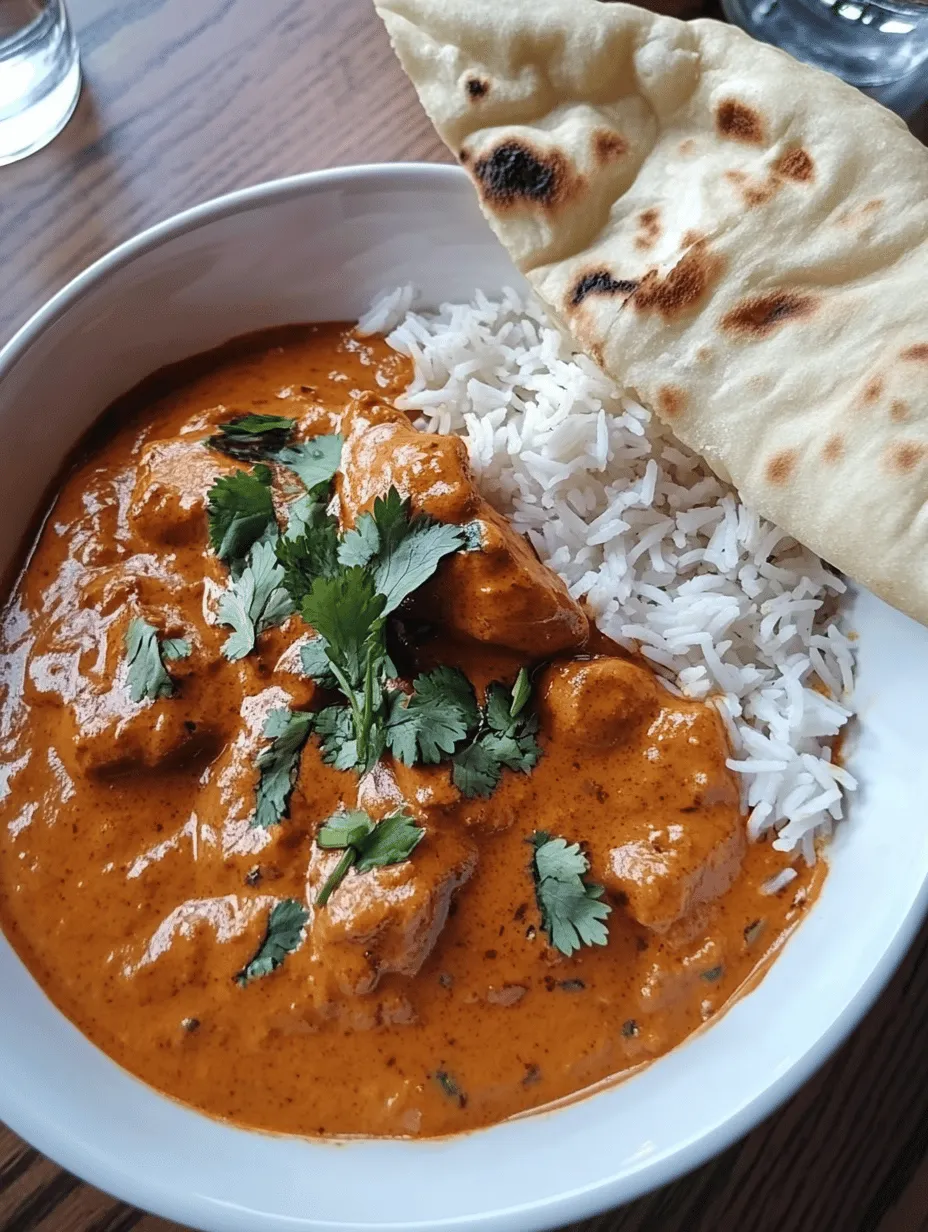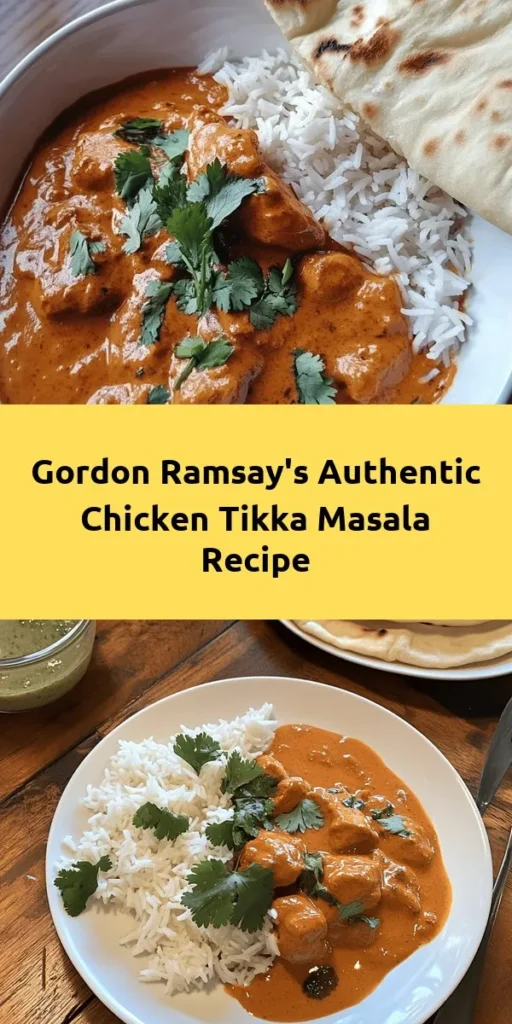Introduction to Chicken Tikka Masala
Chicken Tikka Masala is more than just a dish; it is a culinary symbol that bridges cultures, bringing together Indian and British influences in a harmonious blend that tantalizes taste buds across the globe. While the exact origins of Chicken Tikka Masala are often debated—some claiming it was born in India, while others argue it was created in the UK—it is universally recognized for its rich, aromatic flavors and creamy, tomato-based sauce. The dish has evolved into a staple in Indian restaurants worldwide and has found its way into the hearts and homes of countless families, becoming a beloved classic for both casual dinners and special occasions.
In this article, we will explore Gordon Ramsay’s rendition of Chicken Tikka Masala, known for its robust flavors and elegant presentation. Ramsay, a renowned chef celebrated for his culinary expertise, brings his unique flair to this traditional dish, ensuring that every bite is a delightful experience. Whether you are a seasoned chef or a cooking novice, Ramsay’s recipe is designed to guide you through the intricate process of creating this flavorful masterpiece.
As we embark on this culinary journey, we will delve into the essential ingredients, the significance of each step in the preparation process, and the cultural significance of Chicken Tikka Masala. Get ready to elevate your cooking skills and impress your family and friends with this iconic dish.
Understanding the Ingredients
The Importance of Marinade
At the heart of a great Chicken Tikka Masala is the marinade, which plays a crucial role in enhancing the dish’s flavor profile. Marinating chicken not only tenderizes the meat but also infuses it with a complex array of spices that define the dish. The process of marinating allows the ingredients to penetrate the chicken, ensuring that every bite is bursting with flavor.
Gordon Ramsay’s marinade typically consists of yogurt, a variety of spices, garlic, and ginger. The yogurt acts as a tenderizer due to its acidity, while the spices contribute depth and warmth. The primary ingredients in the marinade include:
– Yogurt: Provides a creamy texture and helps with the tenderization of the chicken.
– Spices: A blend of spices such as cumin, coriander, and turmeric adds warmth and complexity.
– Garlic and Ginger: Essential aromatics that enhance the overall flavor.
When marinating the chicken, it’s essential to allow sufficient time for the flavors to meld. Ideally, the chicken should marinate for at least 2 hours, but overnight is recommended for the best results.
The Role of Spices
Spices are the backbone of any great Chicken Tikka Masala, and understanding their distinct flavors and health benefits can elevate your cooking to new heights. Here’s a closer look at some key spices used in Gordon Ramsay’s recipe:
– Cumin: This spice has a warm, earthy flavor and is known for its digestive benefits. It adds a nutty profile to the dish and pairs well with other spices.
– Coriander: With its slightly citrusy flavor, coriander complements the richness of the dish. It also has antioxidant properties, making it a healthy addition.
– Turmeric: Recognized for its vibrant yellow color and anti-inflammatory properties, turmeric adds warmth and depth to the sauce.
– Garam Masala: This traditional Indian spice blend typically includes cardamom, cinnamon, and cloves, providing a sweet and aromatic finish to the dish.
– Chili Powder: For those who enjoy a bit of heat, chili powder is essential. It enhances the overall flavor while adding a spicy kick.
Each spice contributes to the dish’s complexity and depth, making it not only flavorful but also a nutritious option when prepared thoughtfully.
Choosing the Right Chicken
When it comes to Chicken Tikka Masala, selecting the right cut of chicken is pivotal for achieving the desired texture and flavor. While chicken breast is commonly used due to its lean nature and quick cooking time, other cuts such as thighs can also be excellent choices. Chicken thighs are generally more flavorful and remain moist during cooking, making them a great option for this dish.
It’s crucial to prioritize freshness and quality when selecting your chicken. Opt for organic or free-range chicken if possible, as it tends to have a richer flavor and more humane farming practices. Always check for signs of freshness, such as a pinkish hue and a firm texture, to ensure that your dish will be both delicious and safe to consume.
Step-by-Step Preparation
Preparing the Marinade
Now that we understand the importance of the marinade and its components, let’s dive into the preparation process. Follow these detailed steps to create a flavorful marinade for your Chicken Tikka Masala:
1. Gather Your Ingredients:
– 500 grams of chicken breast or thighs, cut into bite-sized pieces.
– 200 grams of plain yogurt.
– 2 tablespoons of vegetable oil.
– 1 tablespoon of ground cumin.
– 1 tablespoon of ground coriander.
– 1 teaspoon of turmeric powder.
– 1 teaspoon of garam masala.
– 1 teaspoon of chili powder (adjust based on your spice preference).
– 4 cloves of garlic, minced.
– 1-inch piece of ginger, grated.
– Salt to taste.
2. Mix the Marinade:
– In a large mixing bowl, combine the yogurt, vegetable oil, ground spices (cumin, coriander, turmeric, garam masala, and chili powder), minced garlic, grated ginger, and salt. Mix well until all ingredients are thoroughly combined.
3. Marinate the Chicken:
– Add the chicken pieces to the marinade, ensuring each piece is well coated. Cover the bowl with plastic wrap or transfer the mixture to a resealable plastic bag. Refrigerate for at least 2 hours, but overnight is ideal for maximum flavor infusion.
Baking the Chicken
Once the marinating process is complete, it’s time to bake the chicken to achieve that characteristic char and depth of flavor. Follow these steps to ensure perfectly baked chicken:
1. Preheat the Oven:
– Preheat your oven to 400°F (200°C). A hot oven is essential for achieving that slightly charred texture that enhances the dish.
2. Prepare the Baking Tray:
– Line a baking tray with aluminum foil for easy cleanup. Lightly grease the foil with cooking spray or a drizzle of oil to prevent the chicken from sticking.
3. Arrange the Chicken:
– Remove the marinated chicken from the refrigerator. Allow any excess marinade to drip off before arranging the chicken pieces on the prepared baking tray in a single layer, ensuring they are not overcrowded.
4. Bake the Chicken:
– Bake the chicken in the preheated oven for about 15-20 minutes, or until the chicken is cooked through and has developed a slight char. You can also broil the chicken for the last few minutes for an extra charred effect, but keep a close eye on it to prevent burning.
Crafting the Tikka Masala Sauce
While the chicken is baking, you can start preparing the rich and creamy Tikka Masala sauce. The following steps outline how to create a flavorful sauce that will perfectly complement your baked chicken:
1. Gather Your Sauce Ingredients:
– 2 tablespoons of vegetable oil or ghee.
– 1 large onion, finely chopped.
– 4 cloves of garlic, minced.
– 1-inch piece of ginger, grated.
– 1 can (400 grams) of diced tomatoes or tomato puree.
– 200 ml of heavy cream or coconut milk for a dairy-free option.
– 1 teaspoon of sugar (to balance acidity).
– Salt and pepper to taste.
– Fresh cilantro for garnish (optional).
2. Sauté Aromatics:
– In a large skillet or pan over medium heat, add the vegetable oil or ghee. Once hot, add the finely chopped onions and sauté until they are soft and translucent, about 5-7 minutes.
3. Add Garlic and Ginger:
– Stir in the minced garlic and grated ginger, cooking for an additional minute until fragrant. This step is crucial as it builds the foundation of flavor for your sauce.
4. Incorporate Tomatoes:
– Add the canned tomatoes or tomato puree to the skillet, stirring well to combine. Allow the mixture to simmer for about 10-15 minutes, letting the flavors meld together and the sauce thicken.
5. Blend in the Spices:
– Once the sauce has thickened, add the remaining spices (cumin, coriander, turmeric, garam masala, and chili powder) along with the sugar. Stir well and let it simmer for another 5 minutes to allow the spices to release their flavors fully.
6. Finish with Cream:
– Lower the heat and pour in the heavy cream or coconut milk, stirring until the sauce is creamy and well blended. Season with salt and pepper to taste. If desired, you can add a splash of water to reach your preferred sauce consistency.
Combining Chicken and Sauce
Once both the chicken and sauce are ready, it’s time to bring everything together for a delicious Chicken Tikka Masala. Simply add the baked chicken pieces to the sauce, gently stirring to coat the chicken in the rich, creamy mixture. Allow it to simmer for a few minutes, letting the flavors meld before serving.
As you prepare to serve this dish, consider garnishing with freshly chopped cilantro for a burst of color and flavor.
In the next part of this article, we will explore serving suggestions, side dishes that pair beautifully with Chicken Tikka Masala, and tips for perfecting your culinary skills in making this classic dish. Stay tuned for more insights into this delightful recipe!

How to Properly Integrate the Baked Chicken into the Sauce
Once your chicken has been marinated and baked to perfection, the next step is to seamlessly integrate it into the rich, aromatic sauce you’ve prepared. Begin by ensuring that the sauce is simmering gently on the stovetop. This helps in maintaining the right temperature for combining the ingredients without compromising the flavors.
1. Add the Chicken: Carefully transfer the baked chicken pieces into the bubbling sauce. It’s crucial to use a slotted spoon to avoid excess marinade from the baking tray, which could dilute the sauce.
2. Coat the Chicken: Stir the chicken pieces gently in the sauce, making sure each piece is well-coated. This allows the chicken to absorb the flavors of the sauce, enhancing the overall taste of the dish.
3. Simmer: Reduce the heat to low and let the chicken simmer in the sauce for approximately 10-15 minutes. This step is essential, as it allows the chicken to meld with the spices and flavors of the sauce, creating a beautifully integrated dish.
4. Taste and Adjust: Before serving, taste the sauce and adjust the seasoning as necessary. This is where you can balance the flavors to your liking. If it feels a bit flat, consider adding a pinch of salt or pepper. If the sauce is too spicy, a teaspoon of sugar can help mellow the heat.
Tips for Balancing Flavors with Salt, Pepper, and Optional Sugar
Balancing the flavors in Chicken Tikka Masala is vital for achieving that authentic taste that people crave. Here are some tips to help you perfect your dish:
– Salt: Start with a small amount of salt, as the marinated chicken may already contain salt. Add more incrementally, tasting as you go. Remember that salt enhances other flavors, so finding the right balance is crucial.
– Pepper: Freshly ground black pepper adds a lovely warmth and slight heat. Use it sparingly at first, as it can quickly overpower the other spices.
– Sugar: If your sauce has a tangy or overly spicy profile, adding a teaspoon of sugar can help round out the flavors. Sugar not only balances acidity but also enhances the overall taste of the dish.
– Cilantro: As a garnish or a final flavor touch, fresh cilantro can brighten the dish and add a herbal note that complements the spices beautifully.
Serving Suggestions
Traditional Accompaniments
Chicken Tikka Masala is best enjoyed with traditional accompaniments that enhance its rich flavors. Here are some classic side dishes:
– Basmati Rice: This fragrant rice is the perfect canvas to soak up the delectable sauce. Cooked with a bit of cardamom and cloves, it elevates the dish, making every bite a delight.
– Naan Bread: Soft, pillowy naan is ideal for scooping up the chicken and sauce. Whether you choose plain, garlic, or butter naan, it adds texture and fullness to the meal.
– Raita: A cooling yogurt-based condiment, raita is often served alongside spicy dishes. It helps to mellow the heat from the spices, making it a refreshing addition.
– Vegetable Samosas: These crispy pastries filled with spiced potatoes and peas can serve as an excellent starter before diving into the main dish.
When plating your Chicken Tikka Masala, consider garnishing it with fresh cilantro for a pop of color and added flavor. A wedge of lemon can also be served on the side, allowing guests to squeeze fresh juice over their dish for a zesty finish.
Pairing with Beverages
To complement the rich, spicy flavors of Chicken Tikka Masala, consider these beverage options:
– Lassi: A traditional Indian yogurt drink, lassi can be either sweet or salty. The coolness of lassi is a perfect counterbalance to the spiciness of the curry.
– Chai: Spiced tea, also known as chai, can offer a comforting start or finish to your meal. The warm spices in chai echo the flavors in your dish beautifully.
– Beer: A light lager or a wheat beer can be refreshing alongside the dish. The carbonation and crispness can cleanse the palate between bites.
– Red Wine: If you prefer wine, a fruity red like a Zinfandel or a Grenache can work well, as they complement the spices without overwhelming the dish.
Cultural Significance of Chicken Tikka Masala
A Dish of Many Origins
Chicken Tikka Masala, often cited as a quintessential British dish, has a fascinating history that reflects the culinary exchanges between cultures. The dish is believed to have originated in India, where marinated chicken is grilled to perfection. However, the introduction of a creamy tomato-based sauce is often attributed to Indian restaurants in the UK during the 1960s.
The creation of Chicken Tikka Masala is a testament to the adaptability of Indian cuisine, merging traditional elements with local tastes. Over time, it has transcended its origins, becoming a beloved dish in restaurants and homes around the world.
Popularity in Different Regions
Chicken Tikka Masala’s popularity is not confined to Indian or British cuisine; it has found a place in menus globally. In Canada, it is often served with a side of buttered naan and rice, while in the United States, variations may incorporate different spices or ingredients, reflecting regional tastes.
In India, you might find variations that include additional vegetables or different types of meat, showcasing the dish’s versatility. Each region adapts the recipe to fit local preferences, ensuring that Chicken Tikka Masala remains a dish that resonates with many cultures.
Nutritional Analysis
Caloric and Nutrient Breakdown
When prepared according to Gordon Ramsay’s recipe, Chicken Tikka Masala offers a satisfying balance of protein, carbohydrates, and fats. A typical serving (about one cup) contains:
– Calories: Approximately 350-450 calories, depending on the sauce’s richness and the amount of chicken used.
– Protein: Chicken is an excellent source of protein, providing about 30 grams per serving, making it a hearty choice.
– Carbohydrates: When served with rice or naan, the carbohydrate content increases, offering energy for your meal.
– Fats: The cream and oil contribute to the fat content, which can be moderated by using low-fat yogurt or reducing the amount of cream if desired.
Health Considerations
Chicken Tikka Masala can be adapted to fit various dietary needs:
– Lowering Calories: For a lighter version, consider using skinless chicken breasts and substituting cream with Greek yogurt. This change can significantly reduce the calorie count while still maintaining a creamy texture.
– Vegetarian Options: For those who prefer vegetarian meals, substituting chicken with paneer or tofu can create a delicious and protein-rich alternative.
– Gluten-Free: The dish is naturally gluten-free if served with rice instead of naan. Ensure that any additional ingredients, such as yogurt or spices, are gluten-free.
Conclusion
Chicken Tikka Masala is more than just a meal; it is a culinary experience that brings together a symphony of flavors and textures. By following Gordon Ramsay’s recipe, you can recreate this classic dish in the comfort of your home, allowing you to savor its rich history and delightful taste. Whether served at a family dinner or a special occasion, this dish is sure to impress and satisfy, making it a staple in your cooking repertoire. Enjoy the journey of creating and sharing this beloved classic!



